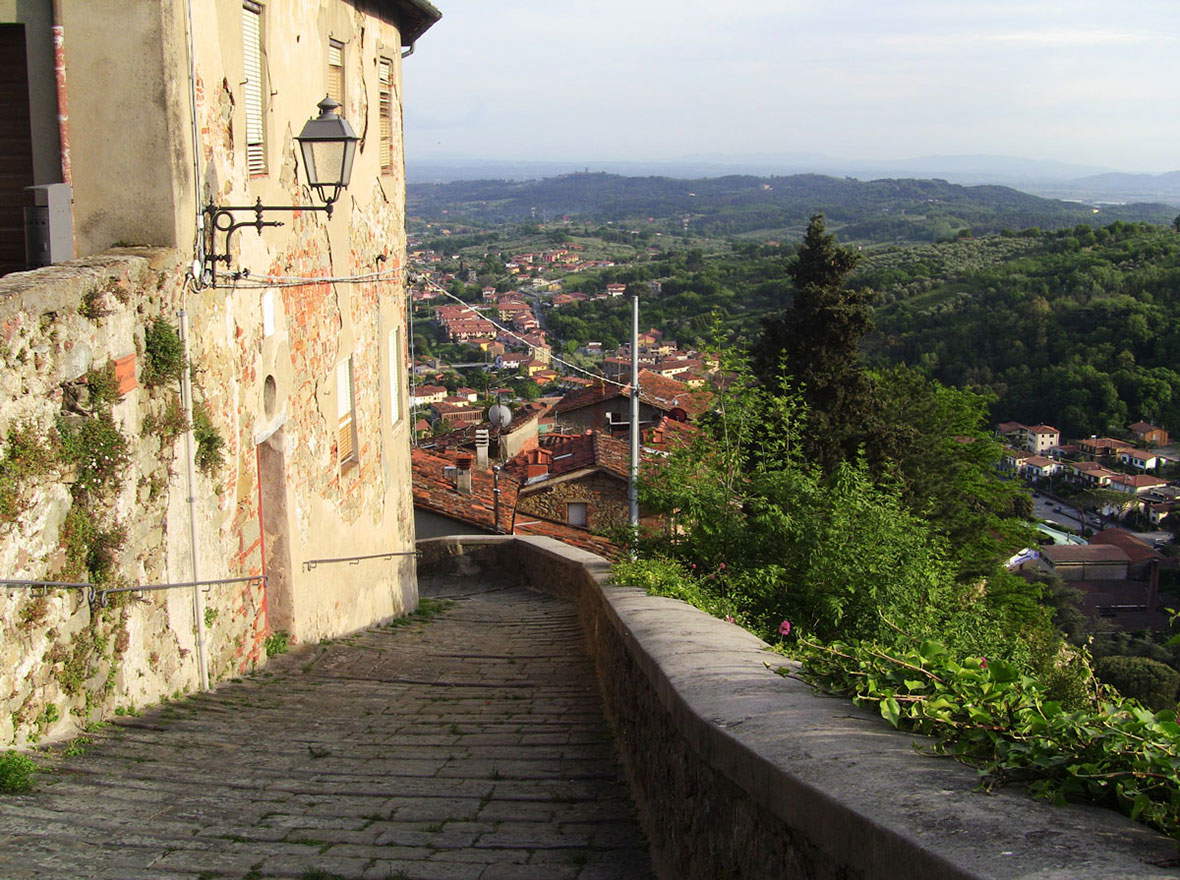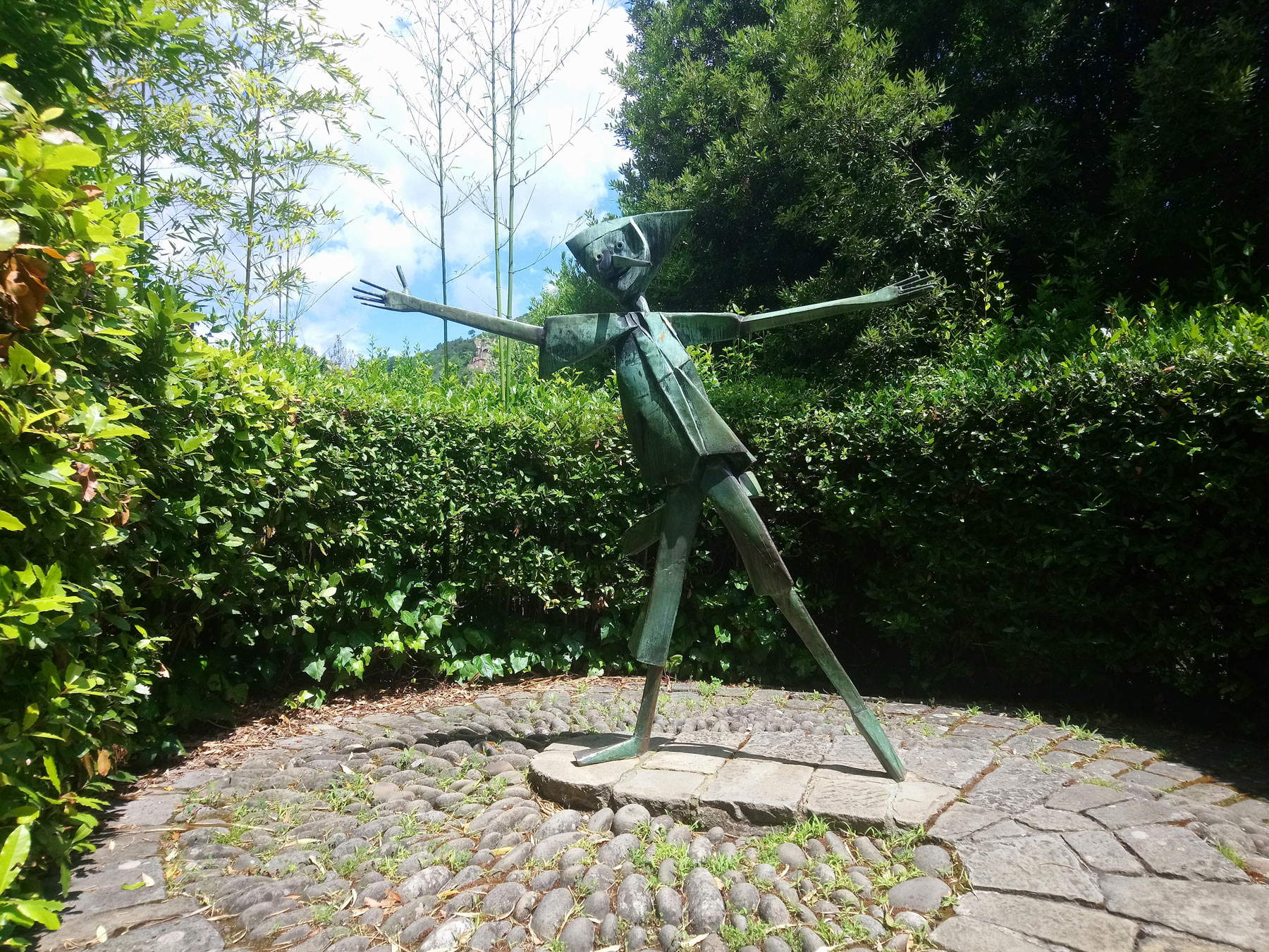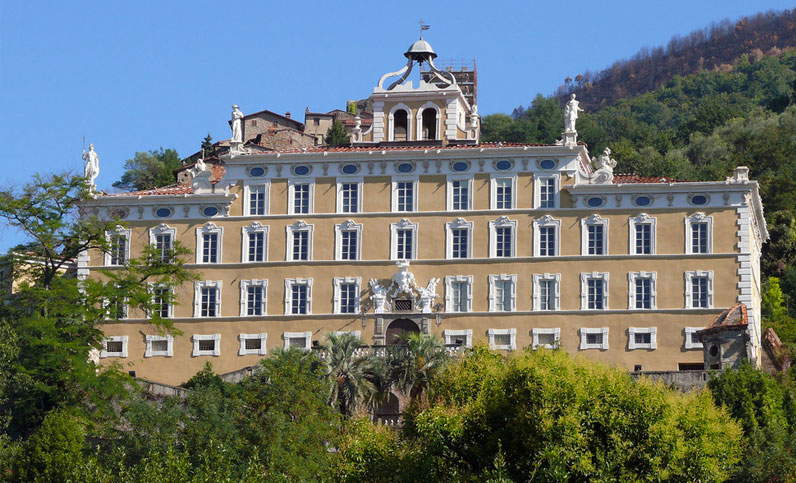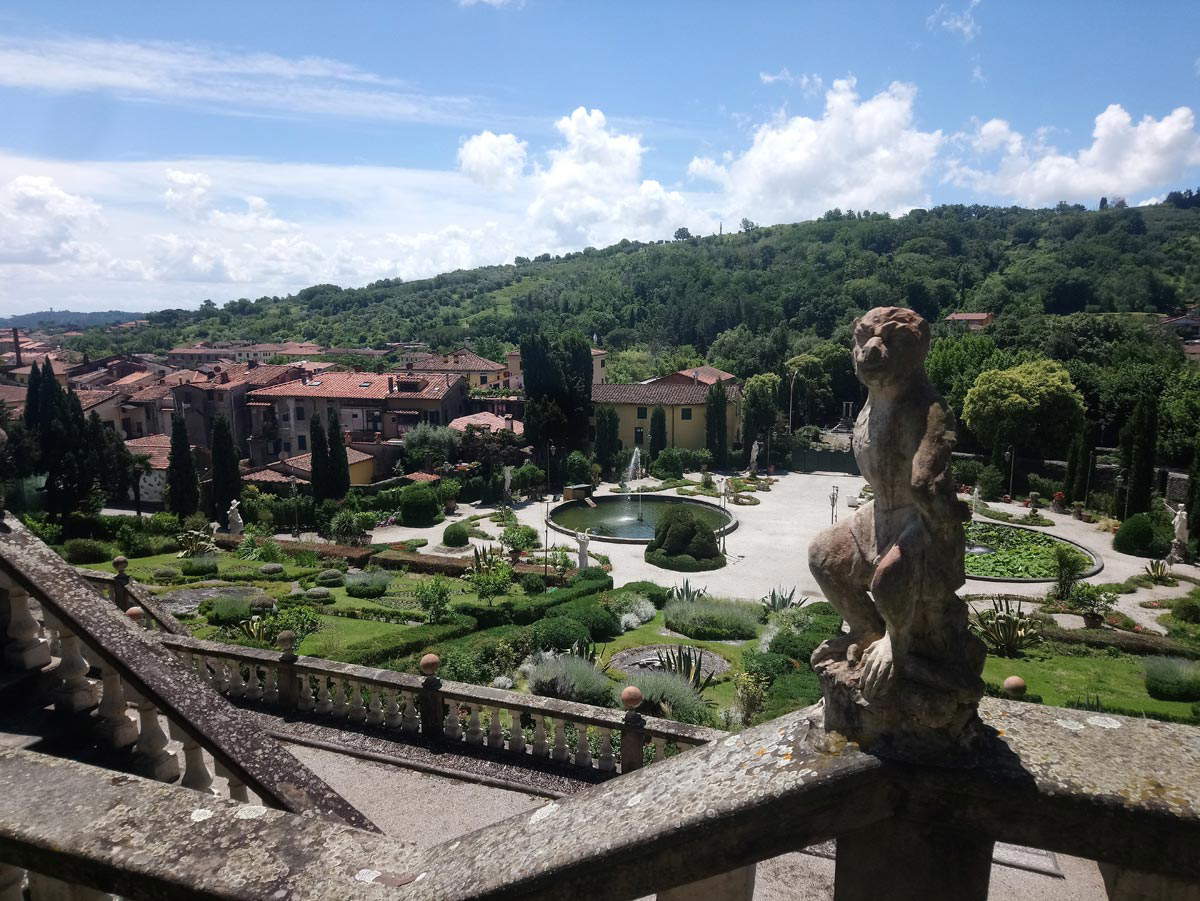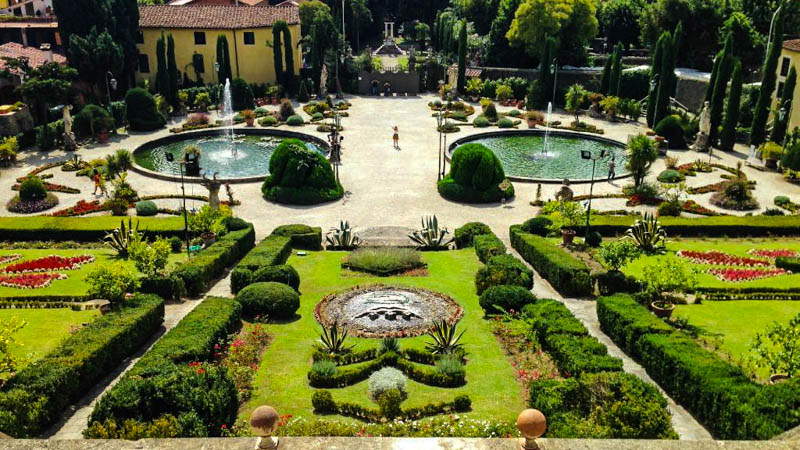by Redazione , published on 16/09/2020
Categories: Travel
/ Disclaimer
Everyone knows Pinocchio, but perhaps not everyone knows the village where its author, Carlo Lorenzini, grew up: it is Collodi, a place so dear to the writer that it became his pseudonym.
“Just past Altopascio, if you turn to the left, you see in the distance a long crawl of old casipole blackened by time, climbing up the back of a high and steep mountain, like a herd of bigie sheep. That crawl of casipole is the ancient castle of Collodi”: this is how the great Carlo Lorenzini, the father of Pinocchio who owes to Collodi the pseudonym by which he became famous throughout the world, described the village where he, a Florentine but whose mother was originally from the area, used to spend his childhood. Collodi described Collodi in these terms in one of his 1883 books, Giannettino’s Journey through Italy: more than one hundred and thirty years have passed, but nothing has changed. The village of Collodi is still a steep strip of houses clinging to the mountain, flowing down from the parish church of San Bartolomeo, at its highest point, until it flows into the garden of Villa Garzoni, which closes the village in the valley: from a distance, Collodi looks like a waterfall. The houses are still the stone ones built centuries ago, tufts of grass sprout everywhere in the cobblestones of the alleys, often covering almost all the space, the entire village is off-limits to traffic (the narrow streets are otherwise too narrow and steep), and apparently there are no signs of modernity here.
It is on this mountainous coast of the Valdinievole that the characters that have accompanied our childhoods came to life: the puppet Pinocchio, Master Geppetto and Master Cherry, the Cat and the Fox, the little girl with the turquoise hair. With little work of imagination, it will not be difficult to imagine them popping up at the corner of an alley, catching sight of them in the middle of a flight of steps, seeing them standing still under a brick arch. And likewise, the imagination will run to the child Lorenzini tumbling down the alleys of the village where one of the most successful literary adventures of all time was born.
An adventure that the municipality of Pescia, to which Collodi belongs, wanted to commemorate with an avant-garde operation: a contemporary art park entirely dedicated to the fairy tale of the puppet-turned-child, with a series of sculptures arranged along a path in stages that would evoke the chapters of the book. The year was 1951: an area at the foot of the village was identified, and a competition was announced by the mayor of Pescia, Rolando Anzillotti, for a first monument honoring the puppet. Two of the greatest Italian sculptors of the time, Emilio Greco and Venturino Venturi, were equal winners: the former created the bronze statue depicting Pinocchio with the turkish fairy, and the latter designed the small mosaic square that evokes some of the book’s highlights. In 1956 Pinocchio Park was opened to the public, but the surprises were not over, because between the 1960s and 1970s it was enriched by Pietro Consagra’s sculptures, dedicated to characters from the fairy tale, and Marco Zanuso’s architectural interventions: the path dreamed of twenty years earlier became reality in 1972, and today the Park is not only one of the most visited attractions in Tuscany and most loved by families, but it is also one of the most surprising and coherent art parks to be found in Italy. And just outside, the great writer Lorenzini is honored with a bronze monument, not far from the world’s tallest wooden Pinocchio: a large statue over twelve meters high that, hidden behind the trees, looks down on the Park from above.
 |
| View of Collodi |
 |
| The parish church of San Bartolomeo. Ph. Credit Finestre Sull’Arte |
 |
| An alley in the village of Collodi. Ph. Credit Collodi.com. |
 |
| Emilio Greco, Pinocchio and the Fairy (1956; bronze; Collodi, Pinocchio Monumental Park). Ph. Credit Pinocchio Monumental Park. |
 |
| The mosaic square in Pinocchio Park. Ph. Credit Finestre Sull’Arte. |
 |
| Pietro Consagra, Pinocchio (1963; bronze; Collodi, Pinocchio Monumental Park). Ph. Credit Finestre Sull’Arte |
 |
| The world’s tallest wooden Pinocchio (2009 work by atelier Volet, Switzerland, 16 meters high). Ph. Credit Francesco Bini |
Opposite the Park is the lush garden of Villa Garzoni, one of the best-preserved monumental gardens of the 17th century in Europe, another place linked to the story of Pinocchio: Carlo Lorenzini’s mother, Angiolina Orzali, worked in the Villa, where she met her future husband, Domenico Lorenzini. Retracing the history of the Villa means going back to the history of Collodi itself: the Garzoni family, Ghibellines, throughout the 14th century became embroiled in the struggles that pitted the towns on their side against Florence and its allies, eventually losing the war. The family therefore left Collodi to take shelter in Lucca, which would later return in possession of the fiefdom never to leave it again, but they were able to keep their possessions in the village. And in one of these lands they had their residence built, probably already in ancient times, although the first mention in a document dates back to 1633: this is the heyday of the villa, which twenty years later, in 1652, saw the construction of the famous garden terraces, with its tripartite staircase leading to the first upper level, from which starts a further, very steep double cascading staircase (the so-called “Scala d’Acqua”, since a rivulet of water actually flows in the center) that leads to the top of the garden, from where the villa is reached. In the lowest level, the one on the street front, two statues, a Pan and a Flora, accompany the visitor toward the water lily pools: one then gets lost among the boxwood hedges that form the paths leading up to the staircase. On either side of the Scala d’Acqua, here starts the labyrinth, an intricate thicket that according to tradition brings good luck to lovers who visit it, to be walked through and then regain the paths leading to the villa, with its imposing and sober facade filled with large windows (so much so that it is called “the villa of a hundred windows”). First, however, one admires the garden from above: there opens up to view an elaborate geometry of hedges, colorful flowers, trees and bushes, and in the forecourt the two pools with their jets of water like two large eyes.
Having passed the butterfly house and the aviary with the cranes, one exits the garden and turns one more glance at the village from below, and immediately the image of Collodi that Carlo Lorenzini had given of this view becomes clear: “down below almost at the foot of the mountain rises the grandiose Villa Garzoni, with its beautiful garden, a villa of baroque style and drab with white, which, seen from afar, seems to hold on its shoulders all the houses of the old and blackened village.”
 |
| The facade of Villa Garzoni. Ph. Credit Pinocchio Monumental Park |
 |
| The garden of Villa Garzoni. Ph. Credit Finestre Sull’Arte |
 |
| The garden of Villa Garzoni |
 |
| View of Collodi from below |
Article written by the editorial staff of Finestre sull’Arte for UnicoopFirenze’s “Toscana da scoprire” campaign.
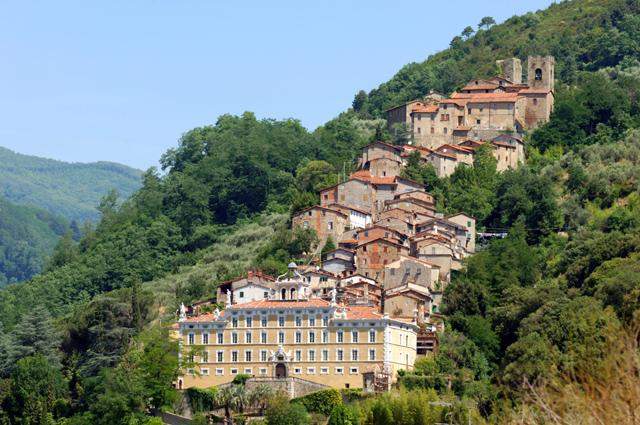 |
| Collodi, the ancient and steep village of Pinocchio |
Warning: the translation into English of the original Italian article was created using automatic tools.
We undertake to review all articles, but we do not guarantee the total absence of inaccuracies in the translation due to the program. You can
find the original by clicking on the ITA button. If you find any mistake,please contact us.


